The AMD Radeon R9 Fury Review, Feat. Sapphire & ASUS
by Ryan Smith on July 10, 2015 9:00 AM ESTMeet The Sapphire Tri-X R9 Fury OC
Today we’ll be looking at Fury cards from both Sapphire and Asus. We’ll kick things off with Sapphire’s card, the Tri-X R9 Fury OC.
| Radeon R9 Fury Launch Cards | |||||
| ASUS STRIX R9 Fury | Sapphire Tri-X R9 Fury | Sapphire Tri-X R9 Fury OC | |||
| Boost Clock | 1000MHz / 1020MHz (OC) |
1000MHz | 1040MHz | ||
| Memory Clock | 1Gbps HBM | 1Gbps HBM | 1Gbps HBM | ||
| VRAM | 4GB | 4GB | 4GB | ||
| Maximum ASIC Power | 216W | 300W | 300W | ||
| Length | 12" | 12" | 12" | ||
| Width | Double Slot | Double Slot | Double Slot | ||
| Cooler Type | Open Air | Open Air | Open Air | ||
| Launch Date | 07/14/15 | 07/14/15 | 07/14/15 | ||
| Price | $579 | $549 | $569 | ||
Sapphire is producing this card in two variants, a reference clocked version and a factory overclocked version. The version we’ve been sampled is the factory overclocked version, though other than some basic binning to identify cards that can handle being overclocked, the two cards are physically identical.
As far as Sapphire’s overclock goes, it’s a mild overclock, with the card shipping at 1040MHz for the GPU while the memory remains unchanged at 1Gbps. As we discussed in our R9 Fury X review, Fiji cards so far don’t have much in the way of overclocking headroom, so AMD’s partners have to take it easy on the factory overclocks. Sapphire’s overclock puts the upper-bound of any performance increase at 4% – with the real world gains being smaller – so this factory overclock is on the edge of relevance.
Getting down to the nuts and bolts then, Sapphire’s card is a semi-custom design, meaning Sapphire has paired an AMD reference PCB with a custom cooler. The PCB in question is AMD’s PCB from the R9 Fury X, so there’s little new to report here. The PCB itself measures 7.5” long and features AMD’s 6 phase power design, which is designed to handle well over 300W. For overclockers there is still no voltage control options available for this board design, though as Sapphire has retained AMD’s dual BIOS functionality there’s plenty of opportunity for BIOS modding.
The real story here is Sapphire’s Tri-X cooler, which gets the unenviable job of replacing AMD’s closed loop liquid cooler from the R9 Fury X. With a TBP of 275W Sapphire needs to be able to dissipate quite a bit of heat to keep up with Fiji, which has led to the company using one of their Tri-X coolers. We’ve looked at a few different Tri-X cards over the years, and they have been consistently impressive products. For the Tri-X R9 Fury, Sapphire is aiming for much the same.
Overall the Tri-X cooler used on the Tri-X R9 Fury ends up being quite a large cooler. Measuring a full 12” long it runs the length of the PCB and then some, meanwhile with that much copper and aluminum it’s not a light card either. The end result is that with such a large cooler the card is better defined as a PCB mounted on a cooler than a cooler mounted on a PCB, an amusing juxtaposition from the usual video card. As a result of this Sapphire has gone the extra mile to ensure that the PCB can support the cooler; there are screws in every last mounting hole, there’s a full-sized backplate to further reinforce the card, and the final 4.5” of the cooler that isn’t mounted to the PCB has its own frame to keep that secure as well.
Moving to the top of the card, the Tri-X R9 Fury features three of Sapphire’s 90mm “Aerofoil” fans, the company’s larger, dual ball bearing fans. These fans are capable of moving quite a bit of air even when moving at relatively low speeds, and as a result the overall card noise is kept rather low even under load, as we’ll see in full detail in our benchmark section.
Meanwhile Sapphire has also implemented their version of zero fan speed idle on the Tri-X R9 Fury, dubbed Intelligent Fan Control, which allows the card to turn off its fans entirely when their cooling capacity isn’t needed. With such a large heatsink the Fiji GPU and supporting electronics don’t require active cooling when idling, allowing Sapphire to utilize passive cooling and making the card outright silent at idle. This is a feature a number of manufacturers have picked up on in the last couple of years, and the silent idling this allows is nothing short of amazing. For Sapphire’s implementation on the Tri-X R9 Fury, what we find is that the fans finally get powered up at around 53C, and power down when the temperature falls below 44C.
| Sapphire Tri-X R9 Fury Zero Fan Idle Points | ||||
| GPU Temperature | Fan Speed | |||
| Turn On | 53C | 27% | ||
| Turn Off | 44C | 23% | ||
Helping the cooling effectiveness of the Tri-X quite a bit is the length of the fans and heatsink relative to the length of the PCB. With the 4.5” of overhang, the farthest fan is fully beyond the PCB. That means that all of the air it pushes through the heatsink doesn’t get redirected parallel to the card – as is the case normally for open air cards – but rather the hot air goes straight through the heatsink and past it. For a typical tower case this means that hot air goes straight up towards the case’s exhaust fans, more efficiently directing said hot air outside of the case and preventing it from being recirculated by the card’s fans. While this doesn’t make a night & day difference in cooling performance, it’s a neat improvement that sidesteps the less than ideal airflow situation the ATX form factor results in.
Moving on, let’s take a look at the heatsink itself. The Tri-X’s heatsink runs virtually the entire length of the card, and is subdivided into multiple segments. Connecting these segments are 7 heatpipes, ranging in diameter between 6mm and 10mm. The heatpipes in turn run through both a smaller copper baseplate that covers the VRM MOSFETs, and a larger copper baseplate that covers the Fiji GPU itself. Owners looking to modify the card or otherwise remove the heatsink will want to take note here; we’re told that it’s rather difficult to properly reattach the heatsink to the card due to the need to perfectly line up the heatsink and mate it with the GPU and the HBM stacks.
The Tri-X R9 Fury’s load temperatures tend to top out at 75C, which is the temperature limit Sapphire has programmed the card for. As with the R9 Fury X and the reference Radeon 290 series before that, Sapphire is utilizing AMD’s temperature and fan speed target capabilities, so while the card will slowly ramp up the fan to 75C, once it hits that temperature it will more greatly ramp up the fan to keep the temperature at or below 75C.
Moving on, since Sapphire is using AMD’s PCB, this means the Tri-X also inherits the former’s BIOS and lighting features. The dual-BIOS switch is present, and Sapphire ships the card with two different BIOSes. The default BIOS (switch right) uses the standard 300W ASIC power limit and 75C temperature target. Meanwhile the second BIOS (switch left) Increases the power and temperature limits to 350W and 80C respectively, for greater overclocking limits. Note however that this doesn’t change the voltage curve, so Fury cards in general will still be held back by a lack of headroom at stock voltages. As for the PCB’s LEDs, Sapphire has retained those as well, though they default to blue (sapphire) rather than AMD red.
Finally, since this is the AMD PCB, display I/O remains unchanged. This means the Tri-X offers 3x DisplayPorts along with a single HDMI 1.4 port.
Wrapping things up, the OC version we are reviewing today will retail for $569, $20 over AMD’s MSRP. The reference clocked version on the other hand will retail at AMD’s MSRP of $549, the only launch card that will be retailing at this price. Finally, Sapphire tells us that the OC version will be the rarer of the two due to its smaller run, and that the majority of Tri-X R9 Fury cards that will be on sale will be the reference clocked version.


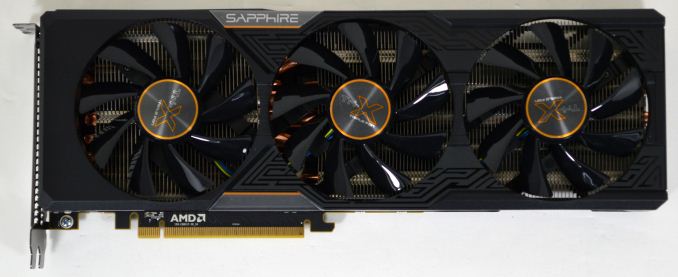
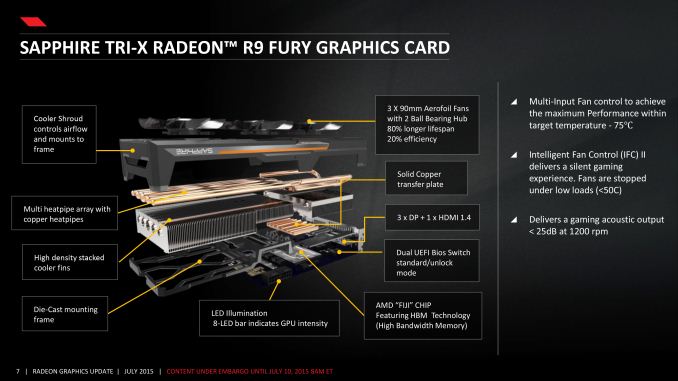
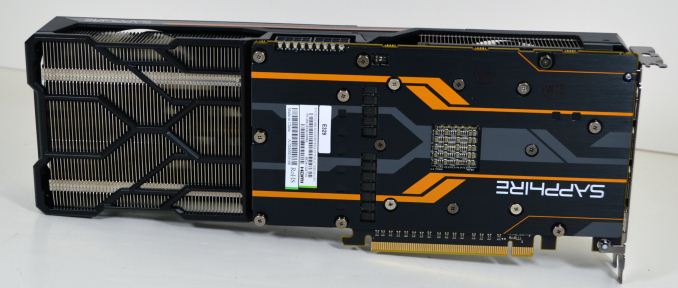
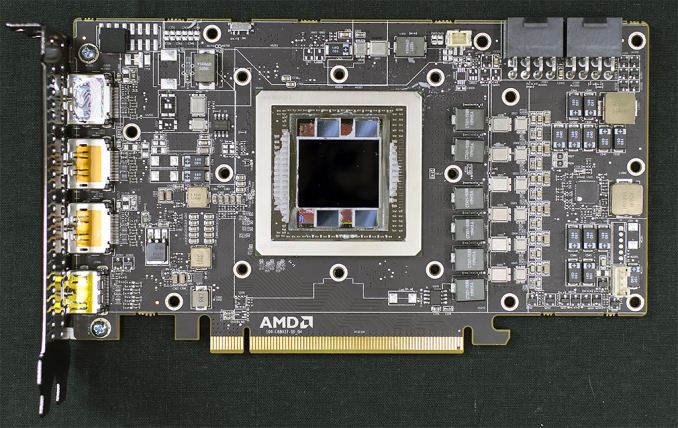


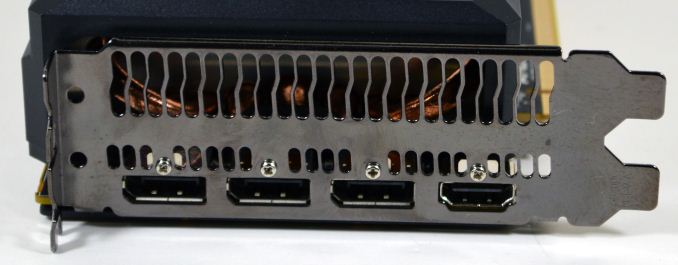








288 Comments
View All Comments
akamateau - Tuesday, July 14, 2015 - link
Radeon 290x is 33% faster than 980 Ti with DX12 and Mantle. It is equal to Titan X.http://wccftech.com/amd-r9-290x-fast-titan-dx12-en...
Sefem - Wednesday, July 15, 2015 - link
You should stop reading wccftech.com this site is full of sh1t! you made also an error because they are comparing 290x to 980 and not the Ti!Asd :D I'm still laughing... those moron cited PCper's numbers as fps, they probably made the assumption since are 2 digit numbers but that's because PCper show numbers in million!!! look at that http://www.pcper.com/files/imagecache/article_max_...
wccftech.com also compare the the 290x on Mantle with the 980 on DX12, probably for an apple to apple comparison ;), the fun continue if you read this Futurmark's not on this particular benchmark, that essentially says something pretty obvious, number of draw calls don't reflect actual performance and thus shouldn't be used to compare GPU's
http://a.disquscdn.com/uploads/mediaembed/images/1...
Finally I think there's something wrong with PC world's results since NVIDIA should deliver more draw calls than AMD on DX11.
FlushedBubblyJock - Wednesday, July 15, 2015 - link
They told us Fury X was 20% and more faster, they lied then, too.Now amd fanboys need DX12 as a lying tool.
Failure requires lying, for fanboys.
Drumsticks - Friday, July 10, 2015 - link
Man auto correct plus an early morning post is hard. I meant "do you expect more optimized drivers to cause the Fury to leap further ahead of the 980, or the Fury X to catch up to the 980 Ti" haha. My bad.My first initial impression on that assessment would be yes, but I'm not an expert so I was wondering how many people would like to weigh in.
Samus - Friday, July 10, 2015 - link
Fuji has a lot more room for driver improvement and optimization than maxwell, which is quite well optimized by now. I'd expect the fury x to tie the 980ti in the near future, especially in dx12 games. But nvidia will probably have their new architecture ready by then.FlushedBubblyJock - Wednesday, July 15, 2015 - link
So, Nvidia is faster, and has been for many months, and still is faster, but a year or two into the future when amd finally has dxq12 drivers and there are actually one or two Dx12 games,why then, amd will have a card....
MY GOD HOW PATHETIC. I mean it sounded so good, you massaging their incompetence and utter loss.
evolucion8 - Friday, July 17, 2015 - link
Your continuous AMD bashing is more pathetic. Check the performance numbers of the GTX 680 when it was launched and check where it stands now? Do the same thing with the GTX 780 and then with the GTX 970, then talk.CiccioB - Monday, July 13, 2015 - link
That is another confirmation that AMD GCN doesn't scale well. That problem was already seen with Hawaii, but also Tahiti showed it's inefficiency with respect to smaller GPUs like Pitcairn.Nvidia GPUs scales almost linearly with respect to the resources integrated into the chip.
This has been a problem for AMD up to now, but it would be worse with new PP, as if no changes to solve this are introduced, nvidia could enlarge its gap with respect to AMD performances when they both can more than double the number of resources on the same die area.
Sdriver - Wednesday, July 15, 2015 - link
This resources reduction just means that AMD performance bottleneck is somewhere else in card. We have to see that this kind of reduction is not made to purposely slow down a card but to reduce costs or to utilize chips which didn't pass all tests to become a X model. AMD is know to do that since their weird but very functional 3 cores Phenons. Also this means if they can work better on the real bottleneck, they will be able to make a stronger card with much less resources, who remembers the HD 4770?...akamateau - Tuesday, July 14, 2015 - link
@ Ryan SmithThis review is actually a BIG LIE.
ANAND is hiding the DX12 results that show 390x outperforming GTX 980Ti by 33%+, Fury outperforming 980ti by almost 50% and Titan X by almost 20%.
Figures do not lie. BUT LIARS FIGURE.
Draw calls are the best metric we have right now to compare AMD Radeon to nVidia ON A LEVEL PLAYING FIELD.
You can not render and object before you draw it!
I dare you to run the 3dMark API Overhead Feature Tests on Fury show how Mantle and DX12 turns nVidia siliocn into RUBBISH.
Radeon 290x CRUSHES 980Ti by 33% and is just a bit better than Titan X.
www dot eteknix.com/amd-r9-290x-goes-head-to-head-with-titan-x-with-dx12/
"AMD R9 290X As Fast As Titan X in DX12 Enabled 3DMark – 33% Faster Than GTX 980"
www dot wccftech dot com/amd-r9-290x-fast-titan-dx12-enabled-3dmark-33-faster-gtx-980/